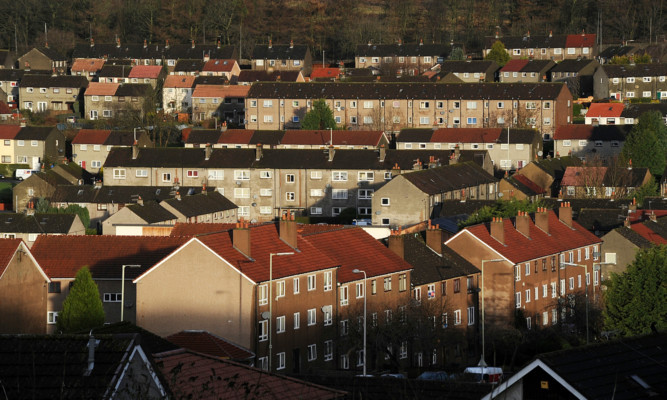Rents in Scotland have increased at a slower rate than in England and Wales, rising 5.3% over the last four years.
Tenants currently pay an average of £536 per month, up from £509 in 2011.
Your Move Scotland said that since the last Holyrood election, rents have risen at roughly half the pace of growth seen across England and Wales, where they have climbed 9.6%
The lettings firm’s Buy-to-Let index reported a 0.1% monthly dip in rental prices in Scotland in January, with the average monthly rent now 1.3% (£7) higher than a year ago.
In England and Wales, rents have risen 2.8% year-on-year.
Brian Moran, area lettings director at Your Move, said: “Scottish tenants are having a much smoother ride than their counterparts south of the border, with rental prices in Scotland climbing at a considerably slower pace.
“Despite snowballing demand for homes to let, the private rented sector has managed to shelter tenants from the worst extremes of rent inflation and rents have navigated an affordable route broadly trailing inflation.
“Housing is a policy area that impacts every one of us and, ahead of the general election, tenants will have their ears on the ground to listen out for any rumbles of changes to lettings legislation that might impact the sector.
“Investment in homes-to-let needs to keep pace with demand and landlord confidence is an essential ointment to soothe the pains of the current housing shortage, and make rent rises an easier pill to swallow for tenants.”
In the past year rents have risen in three out of five Scottish regions, according to the index.
Edinburgh and the Lothians recorded the strongest annual growth, with rents increasing 3.8% (£22) in the twelve months to January 2015.
The east saw rents rise 3.2% (£16) and in Glasgow and the Clyde area tenants are paying 1.3% more.
In the south and in the Highlands and Islands rents are lower now than a year ago, dropping 1.6% and 1.4% respectively.
The proportion of rent arrears dipped to 7.1% in January, down from 7.2% the previous month but up from 6.8% in January 2014.
The index is based on analysis of around 3,000 properties across Scotland.
Mr Moran said: “Scottish tenants are fighting fires with their finances at the moment and while the flames of late rent died down marginally in January, many households are still embroiled in the red.
“This isn’t just the remnants of a Christmas crush on the purse strings – a greater proportion of Scottish households are struggling to keep in control of their rent payments than the same time a year ago.
“While falling petrol and shop prices might be sparking a superficial feelgood factor, under the surface these are drops in the ocean when up against monthly outgoings such as rent and utilities.
“For these hefty household bills, wage inflation is the sticking point and until those wheels are greased many renters aren’t moving anywhere fast with their finances.”
